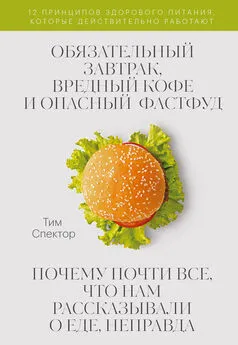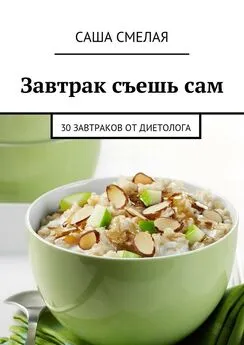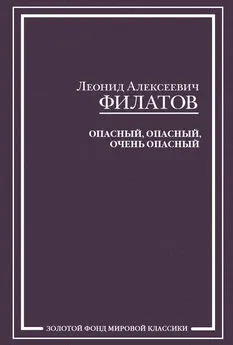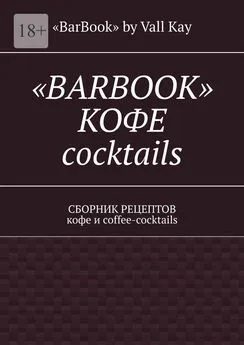Тим Спектор - Обязательный завтрак, вредный кофе и опасный фастфуд
- Название:Обязательный завтрак, вредный кофе и опасный фастфуд
- Автор:
- Жанр:
- Издательство:Манн, Иванов и Фербер
- Год:2021
- Город:Москва
- ISBN:9785001697381
- Рейтинг:
- Избранное:Добавить в избранное
-
Отзывы:
-
Ваша оценка:
Тим Спектор - Обязательный завтрак, вредный кофе и опасный фастфуд краткое содержание
Тим Спектор провел беспрецедентное исследование, в результате которого понял, насколько необоснованны большинство глубоко укорененных в нашем сознании представлений о еде. В каждой главе своей книги он объясняет, почему почти всё, что нам рассказывали о еде, неправда.
Прочитав его книгу, вы сможете полностью переосмыслить свое отношение к еде и научитесь формировать собственный индивидуальный рацион на основе научных рекомендаций.
Обязательный завтрак, вредный кофе и опасный фастфуд - читать онлайн бесплатно ознакомительный отрывок
Интервал:
Закладка:
62
Devries M. C. Changes in kidney function do not differ between healthy adults consuming higher-compared with lower- or normal-protein diets: a systematic review and meta-analysis // Journal of Nutrition. 2018. Vol. 148. No. 11. Pp. 1760–1775.
63
Стир-фрай (от англ. stir-fry — «жарить, перемешивая») — популярная в Азии технология приготовления пищи: быстрое обжаривание в раскаленном масле, в глубокой сковороде, при непрерывном перемешивании.
64
Burton-Freeman B. M. Whole food versus supplement: comparing the clinical evidence of tomato intake and lycopene supplementation on cardiovascular risk factors // Advances in Nutrition. 2014. Vol. 5. No. 5. Pp. 457–485.
65
Lippman S. M. Effect of selenium and vitamin E on risk of prostate cancer and other cancers: the Selenium and Vitamin E Cancer Prevention Trial // JAMA. 2009. Vol. 310. No. 1. Pp. 39–51.
66
Abdelhamid A. S. Omega-3 fatty acids for the primary and secondary prevention of cardiovascular disease // Cochrane Systematic Review. 2018. Vol. 7. P. CD003177.
67
Manson J. E. Marine n-3 fatty acids and prevention of cardiovascular disease and cancer // New England Journal of Medicine. 2019. Vol. 380. No. 1. Pp. 23–32.
68
Khan S. U. Effects of nutritional supplements and dietary interventions on cardiovascular outcomes // Annals of Internal Medicine. 2019. Vol. 171. No. 3. Pp. 190–198.
69
Toews I. Association between intake of non-sugar sweeteners and health outcomes: systematic review and meta-analyses of randomised and non-randomised controlled trials and observational studies // BMJ. 2019. Vol. 364. P. k4718.
70
Dunford E. K. Non-nutritive sweeteners in the packaged food supply — an assessment across 4 countries // Nutrients. 2018. Vol. 10. No. 2. P. e257.
71
Aaron D. G. Sponsorship of national health organizations by two major soda companies // American Journal of Preventative Medicine. 2017. Vol. 52. No. 1. Pp. 20–30.
72
Gornall J. Sugar: spinning a web of influence // BMJ. 2015. Vol. 350. P. h231; infographic doi.org/10.1136/bmj.h231.
73
Veldhuizen M. G. Integration of sweet taste and metabolism determines carbohydrate reward // Current Biology. 2017. Vol. 27. No. 16. Pp. 2476–2485.
74
Blundell J. E. Low-calorie sweeteners: more complicated than sweetness without calories // American Journal of Clinical Nutrition. 2019. Vol. 109. No. 5. Pp. 1237–1238.
75
Suez J. Artificial sweeteners induce glucose intolerance by altering the gut microbiota // Nature. 2014. Vol. 514. No. 7521. Pp. 181–186.
76
Ruiz-Ojeda F. J. Effects of sweeteners on the gut microbiota: a review of experimental studies and clinical trials // Advances in Nutrition. 2019. Vol. 10. Pp. s31–s48.
77
Daly K. Bacterial sensing underlies artificial sweetener-induced growth of gut Lactobacillus // Environmental Microbiology. 2016. Vol. 18. No. 7. Pp. 2159–2171.
78
joinzoe.com.
79
Higgins K. A. A randomized controlled trial contrasting the effects of 4 low-calorie sweeteners and sucrose on body weight in adults with overweight or obesity // American Journal of Clinical Nutrition. 2019. Vol. 109. No. 5. Pp. 1288–1301.
80
Olsson K. Microbial production of next-generation stevia sweeteners // Microbial Cell Factories. 2016. Vol. 15. No. 1. P. 207.
81
joinzoe.com.
82
Wang Q. P. Non-nutritive sweeteners possess a bacteriostatic effect and alter gut microbiota in mice // PLOS ONE. 2018. Vol. 13. No. 7. P. e0199080.
83
Цикута (вёх ядовитый) — токсичное растение семейства зонтичные, широко распространенное на территории Восточной Европы и Северной Америки. Прим. науч. ред.
84
Borges M. C. Artificially sweetened beverages and the response to the global obesity crisis // PLOS Medicine. 2017. Vol. 14. No. 1. P. e1002195.
85
Cowburn G. Consumer understanding and use of nutrition labelling: a systematic review // Public Health Nutrition. 2005. Vol. 8. No. 1. Pp. 21–28.
86
Geiger C. J. Health claims: history, current regulatory status, and consumer research // Journal of the American Dietetic Association. 1998. Vol. 98. No. 11. Pp. 1312–1314.
87
В России норма физиологических потребностей в пищевых волокнах (клетчатке) для взрослых составляет 20 г (согласно МР 2.3.1.2432–08 Нормы физиологических потребностей в энергии и пищевых веществах для различных групп населения Российской Федерации). Прим. науч. ред.
88
DuBroff R. Fat or fiction: the diet-heart hypothesis // BMJ Evidence-Based Medicine. 2019. 29 May. P. ii: bmjebm-2019–111180.
89
fao.org/faostat/en/#data/FBS.
90
Goiana-da-Silva F. Front-of-pack labelling policies and the need for guidance // Lancet Public Health. 2019. Vol. 4. No. 1. P. PE15.
91
Estruch R. Primary prevention of cardiovascular disease with a Mediterranean diet // New England Journal of Medicine. 2013. Vol. 368. Pp. 1279–1290.
92
Ares G. Comparative performance of three interpretative front-of-pack nutrition labelling schemes: insights for policy making // Food Quality and Preference. 2018. Vol. 68. Pp. 215–225.
93
Acton R. B. Do consumers think front-of-package “high in” warnings are harsh or reduce their control? // Obesity. 2018. Vol. 26. No. 11. Pp. 1687–1691.
94
Cecchini M. Impact of food labelling systems on food choices and eating behaviors: a systematic review and meta-analysis of randomized studies // Obes. Rev. Mar. 2016. Vol. 17. No. 3. Pp. 201–210.
95
Bleich S. N. Diet-beverage consumption and caloric intake among US adults, overall and by body weight // American Journal of Public Health. 2014. Vol. 104. Pp. e72–e78.
96
Petimar J. Estimating the effect of calorie menu labeling on calories purchased in a large restaurant franchise in the southern United States: quasi-experimental study // BMJ. 2019. Vol. 367. P. l5837.
97
Downs J. S. Supplementing menu labeling with calorie recommendations to test for facilitation effects // American Journal of Public Health. 2012. Vol. 103. Pp. 1604–1609.
98
Monteiro C. A. NOVA. The star shines bright // World Nutrition. 2016. Vol. 7. No. 1–3. Pp. 28–38.
99
Monteiro C. A. Household availability of ultra-processed foods and obesity in nineteen European countries // Public Health Nutrition. 2018. Vol. 21. No. 1. Pp. 18–26.
100
Steele E. M. Ultra-processed foods and added sugars in the US diet: evidence from a nationally representative cross-sectional study // BMJ Open. 2016. Vol. 6. P. e009892.
101
Hall K. Ultra-processed diets cause excess calorie intake and weight gain: an inpatient randomized controlled trial of ad libitum food intake // Cell Metabolism. 2019. Vol. S1550–4131. No. 19. Pp. 30248–30257.
102
Poti J. M. Ultra-processed food intake and obesity: what really matters for health — processing or nutrient content? // Current Obesity Reports. 2012. Vol. 6. No. 4. Pp. 420–431.
103
Kong L. C. Dietary patterns differently associate with inflammation and gut microbiota in overweight and obese subjects // PLOS ONE. 2014. Vol. 9. No. 10. P. e109434.
104
Mendonça R. Ultraprocessed food consumption and risk of overweight and obesity // American Journal of Clinical Nutrition. 2016. Vol. 104. No. 5. Pp. 1433–1440; Mozzaffarian D. Changes in diet and lifestyle and long-term weight gain in women and men // New England Journal of Medicine. 2011. Vol. 364. No. 25. Pp. 2392–2404.
105
Bouzari A. Vitamin retention in eight fruits and vegetables: a comparison of refrigerated and frozen storage // Journal of Agricultural and Food Chemistry. 2015. Vol. 63. No. 3. Pp. 957–962.
106
fao.org/faostat/.
107
Bouvard V. Carcinogenicity of consumption of red and processed meat // The Lancet Oncology. 2015. Vol. 16. No. 16. Pp. 1599–1600.
108
Plant-based meat could create a radically different food chain // The Economist. 12 October 2019.
109
Dehghan M. Associations of fats and carbohydrate intake with cardiovascular disease and mortality in 18 countries from five continents (PURE): a prospective cohort study // The Lancet. 2017. Vol. 390. No. 10107. Pp. 2050–2062.
110
Wang X. Red and processed meat consumption and mortality: dose-response metaanalysis of prospective cohort studies // Public Health Nutrition. 2016. Vol. 19. No. 5. Pp. 893–905; Etemadi A. Mortality from different causes associated with meat, heme iron, nitrates, and nitrites in the NIH-AARP Diet and Health Study // BMJ. 2017. Vol. 357. P. j1957.
111
Zeraatkar D. Red and processed meat consumption and risk for all-cause mortality and cardiometabolic outcomes: a systematic review and meta-analysis of cohort studies // Ann. Intern. Med. 2019. Vol. 171. No. 10. Pp. 721–731.
112
Rubin R. Blacklash over meat dietary recommendations raises questions about corporate lies to nutrition scientists // JAMA. 2020.
113
Spector T. D. Bacon rashers, statistics, and controversy // blog.bmj.com. 9 October 2019.
114
Lee J. E. Meat intake and cause-specific mortality: a pooled analysis of Asian prospective cohort studies // American Journal of Clinical Nutrition. 2013. Vol. 98. No. 4. Pp. 1032–1041.
115
Lanza E. The polyp prevention trial continued follow-up study // Cancer Epidemiology, Biomarkers and Prevention. 2007. Vol. 16. No. 9. Pp. 1745–1752; Thomson C. A. Cancer incidence and mortality during the intervention and post intervention periods of the Women’s Health Initiative Dietary Modification Trial // Cancer Epidemiology, Biomarkers and Prevention. 2014. Vol. 23. No. 12. Pp. 2924–2935.
116
Bouvard V. Carcinogenicity of consumption of red and processed meat // The Lancet Oncology. 2015. Vol. 16. No. 16. Pp. 1599–1600.
Читать дальшеИнтервал:
Закладка:










